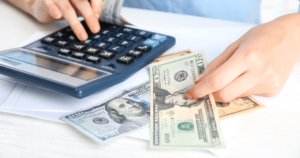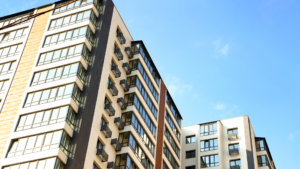When interest rates are increasing—as they have been for nearly all of 2022—the cost of borrowing will directly increase in response. From an investor’s perspective, this means that, at least without a supporting strategy and resources, their profitability may be at risk.
Relatively speaking, interest rates are still quite low—nearly the lowest they have ever been. But even keeping this in mind, the recent rate hikes have generated a new wave of concerns for those who are trying to circulate capital and develop a more productive capital stack.
This is not the first time we’ve seen rates increase in recent years. Between July 2016 and October 2018, rates on 10-year treasury bills (a standard benchmark for gauging the broader cost of capital) roughly doubled, jumping from about 1.6 percent to 3.2 percent. This is, however, the fastest that rates have increased since the turn of the new millennium, which has created a new batch of concerns for investors of all kinds.
Fortunately, with the right investment strategies in place, investors can still be incredibly profitable. In fact, during the late 1970s and early 1980s, when rates were at their all-time high, there were many investors (including property owners and real estate investors) that experienced their most profitable years ever. So, while navigating this rapidly changing capital environment might be a little bit tricky, at times, it is still something that can certainly be done.
While forecasting how rates will change involves quite a bit of speculation, most indicators are suggesting that rates will likely continue to increase over the course of the next year. Anyone who hopes to capitalize effectively will need to have a solid plan. In this brief guide, we will take a look at how interest rates for US treasury bills have changed over the past few decades, and we will also discuss how investors can position themselves to thrive in this current environment.
The Recent History of the US Treasury
The 1970s—and even the late 1960s—were a truly volatile era for interest rates and adjacent markets. After a brief period of stability in the early-to-mid 1960s, interest rates for 10-year T-bills began a steady climb, moving from below 4 percent to about 8 percent around 1970. After that, while there were a few small retractions throughout the 1970s, rates would continue their climb for the next 10 years, fueled by inflation, commodity shortages (particularly energy), and ambitious actions taken by the Federal Reserve.
By September 1981, 10-treasury bills had reached an all-time high—a whopping 15.82 percent. By today’s standards, this highwater mark seems almost unthinkable. As a result of treasury bills having such high interest rates, the cost of borrowing across the board dramatically increased. Though property values—both in nominal and real terms—were relatively low at the time, the cost of mortgages had become much higher, making it more difficult for both primary homebuyers and property investors to achieve a sustainable ROI. Credit cards, personal loans, and other consumer-oriented lending vehicles also considerably increased in total costs.
Throughout the 1980s, while still remaining incredibly volatile, interest rates began to climb back down, eventually becoming more stable. In 1990, following a small period of economic retraction, the rates would drop even further, falling below 6 percent by 1993.
Over the next 15 years—which included both the “dot com” bubble and the eventual housing crisis—rates would continue to come down, reaching a new all-time low of 2.4 percent during the recession’s peak in late 2008.
Following the conclusion of the recession, it appeared that rates were finally beginning to stabilize, settling into a range between 2 percent and 4 percent for a period of about ten years. But by the end of the 2010s—starting even before the coronavirus pandemic rocked the financial world—rates once again began to plunge, reaching a new (and current) all-time low of just 0.5 percent by July 2020.
At the time, even without accounting for the anomalies introduced by the virus, it seemed unlikely rates could possibly remain that low forever. Knowing this, property investors of all kinds realized how urgent it was to take action. A combination of cheap cash, limited housing stock, and government stimulus caused national property markets to experience some of their most profitable quarters to date. Inflation has also been rampant (about 8 percent, year over year), which has prompted some dramatic changes from the Federal Reserve and other key capital market makers.
Over the last two years, rates have experienced one of their sharpest increases in history. Between July 2020 and May 2022, rates have jumped from 0.5 percent to more than 3 percent—a nominal increase of 2.5 percent, but a relative increase of more than 500 percent. Today, there are very few signs that rate increases are going to slow down, making it necessary for property investors to redevelop their typical approach to the market.
Identifying Profitable Properties
Property markets over the past two years have been performing unlike at almost any other point in history. In 2021, property values increased by 20 percent—or even more—across many different classes in many different locations, making real estate one of the few asset classes to significantly outpace inflation.
And capital continues to pour into the real estate market—so much so that some people have even begun to speculate that we might be witnessing another housing bubble comparable to what was witnessed just before 2008. However, there are quite a few reasons to believe that these situations are not very comparable. While the 2008 bubble was largely fueled by poor speculation and mispriced asset bundles (particularly, bundles of mortgage-backed securities), the current “bubble” has been fueled by a genuine housing shortage. There are currently an estimated 2 million fewer homes than the American population requires, meaning that demand-side pressures will likely cause values to increase even further.
Keeping this in mind, how can investors maximize their ROI in this truly once-in-a-lifetime investment climate?
While it is true that interest rates are on the rise—meaning it will cost more to acquire large amounts of capital—just about everything else is on the rise as well. Including rents. Commercial, residential, and industrial property owners are all finding opportunities to considerably increase their rents without sacrificing occupancy. In 2021, rent increases kept pace with inflation, with both rising about 8 percent. Thus far, it seems that 2022 has experienced a similar trajectory.
The existence of sustainable rent increases is made possible by the genuine shortage of properties. But, furthermore, this shortage means that there will also be plenty of opportunities to make improvements to existing properties. By buying a property at a discounted rate and making a variety of different improvements—structural, aesthetic, functional, etc.—property owners can, in most circumstances, acquire more equity than the initial cost of the improvements.
So, while pure cash might not be as easy to come by as it was just two years, the possibility of profitability still remains. The sheer combination of increased rents and equitable improvements still creates an excellent environment for ambitious investors.
Stress Testing Investment Options
Of course, with interest rates increasing, it will be even more important than ever for investors to stress test their properties in order to account for future financial challenges. There is still quite a bit of uncertainty in this fast-changing ecosystem, so it will be important to allow for the possibility of lower vacancies and other sudden obstacles.
During the underwriting process, investors should consider multiple different scenarios. To start, they should look at the internal rate of return (IRR) that could be generated in the most likely occupancy scenario. Looking at the occupancy figures for comparable properties, in terms of class, location, size, and other factors can help investors develop reasonable expectations.
Additionally, investors should consider the best-case scenario—up to 100 percent occupancy. This will enable them to determine what their max ROI might be, assuming that everything goes well. And, naturally, they will also want to consider what their worst-case scenario might be. If the property is, say, a single-family property or a commercial property with a single occupant, investors will want to consider what would happen if their property were completely vacant. How many weeks (or months) can you wait for a tenant before deciding to lower rent? Will it be better to keep rents high and wait a longer period of time? Where is your breakeven point and point of equilibrium?
These are all essential, important questions that will need to be carefully considered. Doing additional stress testing and comparing your property to others like it will help you be much more prepared to address future sources of uncertainty, adapt your investment strategy, and forecast the return your property will generate.
Working with an Experienced Commercial Lender
As we have seen, the current interest rate climate is rapidly changing. In order for any property investment company to remain competitive, it will be crucial to find a commercial loan that effectively meets your needs.
Fortunately, there are a lot of great resources available that will help make it easier for you to explore your options and develop an effective capital stack. At Lincoln James Capital, we utilize a data-driven approach to capital stack building that helps make it easier to find the optimal loan for you. And with interest rates likely positioned to continue rising throughout the remainder of the year (and possibly even far beyond that), now is the time to begin—or continue—investing.
Here’s how Lincoln James Capital can help:
- Consult – you talk, we listen and gather information about your goals and needs
- Go shopping – attract the best lenders and terms when we present your loan app. in the best light
- Get your funding – compare options and choose the best loan so you can close that deal
Visit www.lincolnjamescapital.com or call (980) 500-8731 to schedule an intro meeting.









